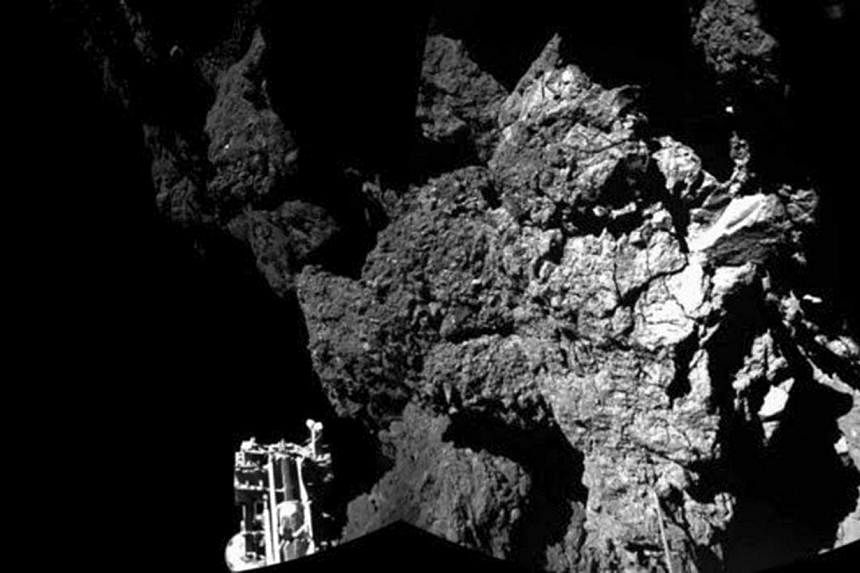PARIS (AFP) - Europe's robot lab Philae may not have enough power to send to Earth the results of Friday's drill into the surface of its host comet, mission scientists said.
"We are not sure there is enough energy so that we can transmit" the data, lander manager Stephan Ulamec said at a press conference webcast from European Space Agency (ESA) ground control in Darmstadt, Germany.
Earlier a mission scientist had told AFP Philae will attempt Friday to drill into its host comet 510 million kilometres from Earth, with just hours of onboard battery life left.
The ESA "has decided to go ahead with the drill," astrophysicist Philippe Gaudon, who heads the Rosetta mission at French space agency CNES, told AFP by telephone from Toulouse in the country's south.
Philae, a washing machine-sized robot lab, landed on the comet Wednesday after a nail-biting seven-hour descent from its orbiting mothership Rosetta, which had travelled more than a decade and 6.5 billion kilometres to get there.
The touchdown on the low-gravity comet did not go entirely according to plan, when Philae's duo of anchoring harpoons failed to deploy and it bounced off twice.
Philae ended up in a mystery zone shadowed from sunlight. It is receiving only 1.5 hours of battery-recharging solar rays per day instead of the six or seven required.
The lab landed with only about 60 hours of onboard power before it needs to switch to solar panels to try and extend the mission duration by as much as possible.
Scientists are still trying to work out how much power Philae may still get from the limited sunlight available to it.
"The primary battery enabling the core science goals of the lander may run out some time in the next 24 hours," said an ESA statement issued at on Friday.
"As for the secondary battery, charged by solar panels on Philae, with only 1.5 hours of sunlight available to the lander each day, there is an impact on the energy budget to conduct science for a longer period of time."
Gaudon said that if Philae's onboard battery runs out and its solar batteries are not charged, which could happen Friday night, Philae won't be dead but "in hibernation".
After its rough touchdown, it was not clear whether Philae would be able to use its drill, one of 10 onboard experiments, to take sub-surface comet samples for chemical testing.
Some feared that trying to activate the drill with the 100-kilogramme lander balanced precariously on a steep slope on the comet - which has minimal gravity - could tip it over.
Drill samples have been among the most highly anticipated results from Philae's mission, with some hoping for clues to the formation of the Solar System and the appearance of life on Earth.

